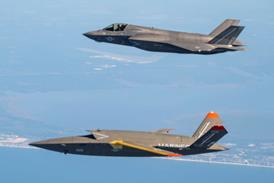A virtual-reality motion capture system, developed for medical treatment and used in special effects for Hollywood films, including Titanic and Gladiator, is to be demonstrated to Boeing and Lockheed Martin as as an advanced development tool.
California-based Vicon Motion Systems, owned by the UK's Oxford Metrics Group, initially provided its three-dimensional system to Pratt & Whitney to develop engine repairs for the F135 on the Lockheed Martin F-35 Joint Strike Fighter. The tasks take place in a 3D virtual-reality setting generated using P&W's computer-aided design (CAD) engineering models and Vicon's motion capture system.
The demonstrations will take place at Lockheed Martin's JSF development centre in Fort Worth, Texas, and at Boeing's Phantom Works in Long Beach, California. "We provide hardware and software to do human digital modelling within a 3D environment. We are getting Sikorsky to do virtual maintenance of the UH-60M and Hamilton Sundstrand on Airbus A380 interiors," says Vicon senior sales engineer John Francis, who adds that initiatives are being pursued with virtual reality design company VRSim, and World Toolkit - a human motion interaction software package made by EDS.
At P&W, a 6 x 6m (20 x 20ft) area was surrounded by Vicon sensor-equipped cameras. An engineer wearing data gloves and a Vicon head-mounted display repaired a CAD-generated engine model. For the first time, the simulation used collision-detection software to reveal interaction problems between operator and environment. "That's why this hasn't taken off until now because things would go through objects. Now hands will not," says Francis.
Using between 12 and 24 one million pixel-capable cameras, Vicon's system tracks reflected infrared or visible light from the human subject, who wears up to 41 reflective markers.
Source: Flight International























